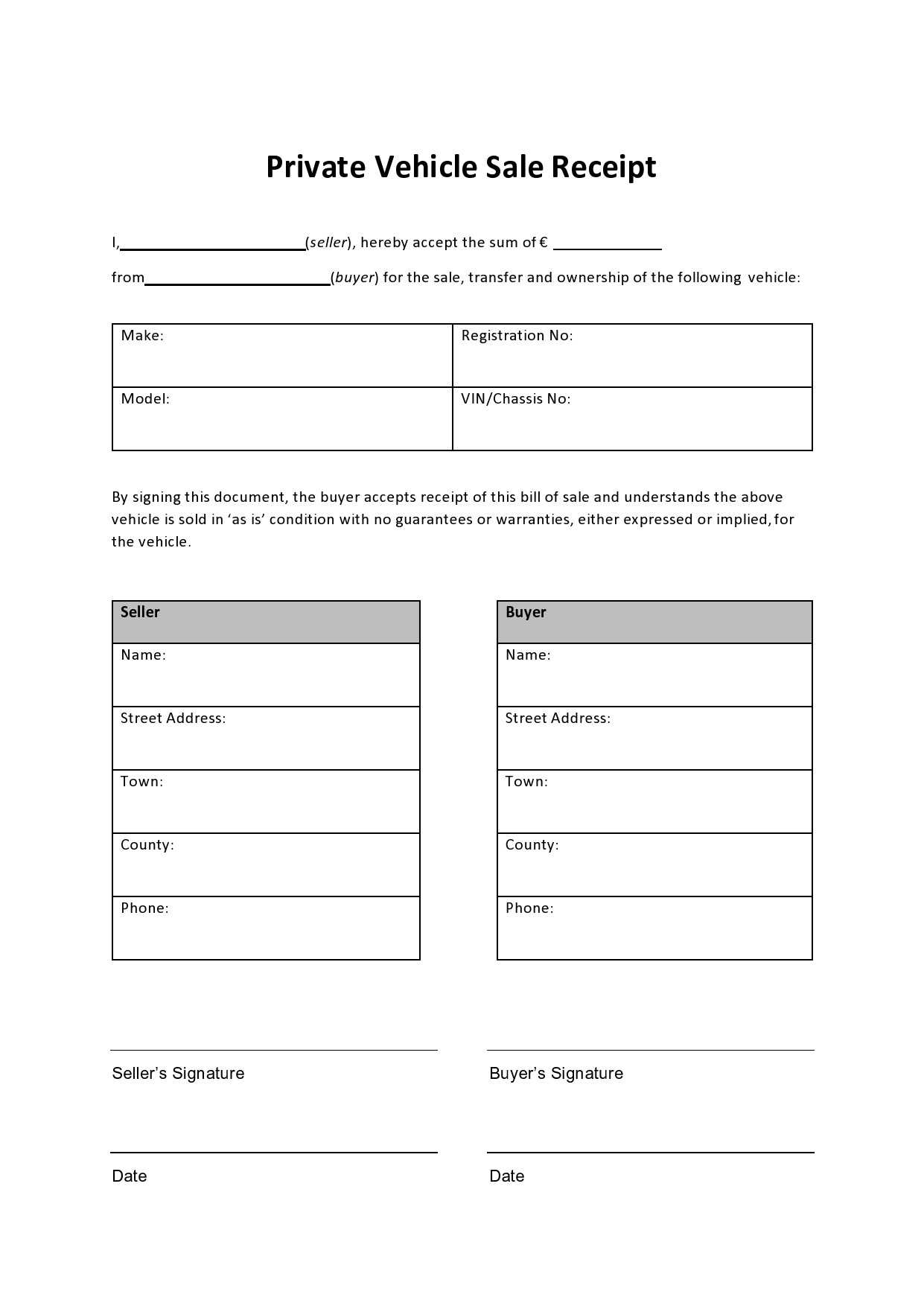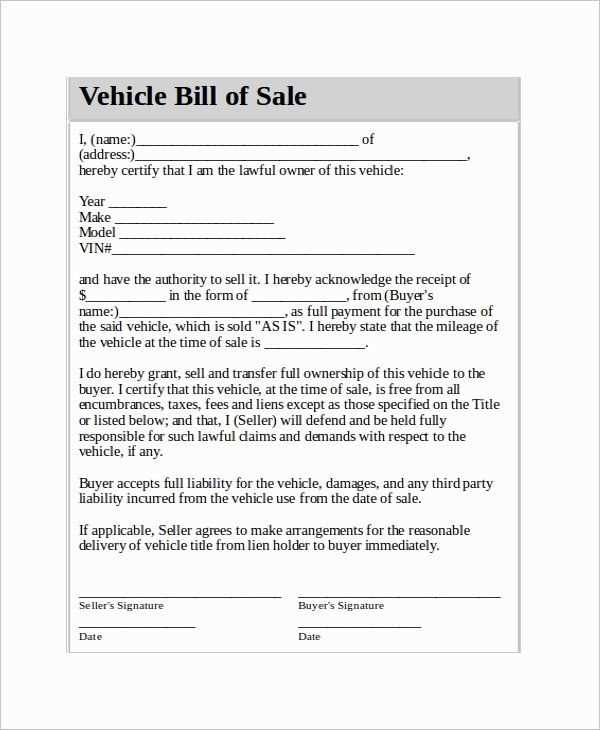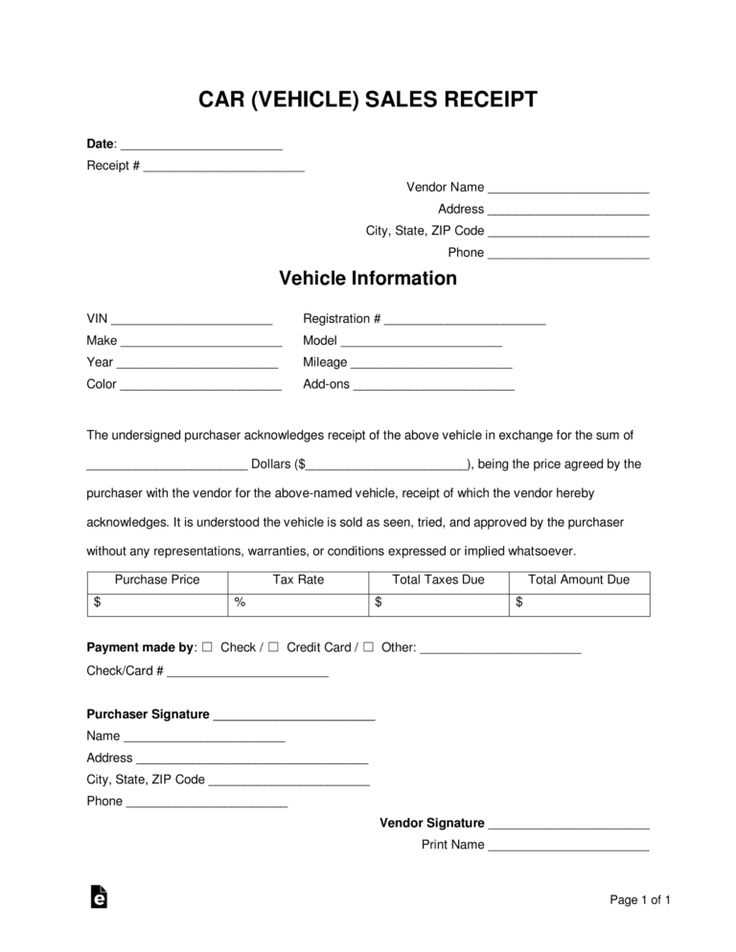
If you’re buying or selling a vehicle in the UK, a well-structured vehicle receipt template is key to confirming the transaction. This document protects both the seller and the buyer by outlining key details of the deal. It acts as proof of the sale and helps avoid future misunderstandings. A simple yet comprehensive template should include the vehicle’s make, model, registration number, sale price, and both parties’ names and addresses. You should also specify the condition of the vehicle and any warranties or guarantees, if applicable.
Make sure the date of the transaction is clearly stated, as well as the payment method used. This ensures there is no confusion about how the transaction was completed. Including a section for signatures is also a good practice. Both parties should sign the receipt to confirm the terms of the agreement. If you are unsure of what to include, many templates are available online that can be customized to suit your needs. This small step provides peace of mind and legal protection in case any issues arise down the line.
A detailed vehicle receipt is particularly useful when transferring ownership. It can be presented when updating the registration with the DVLA or when proving that a transaction has taken place. Take the time to fill it out correctly to avoid potential legal complications later.
Here are the corrected lines:
Ensure your vehicle receipt includes all the necessary information for both parties. Key details should cover the vehicle’s make, model, registration number, and the date of the transaction. A clear and concise statement about the payment method and any terms agreed upon is vital for transparency.
Essential Elements in the Vehicle Receipt
Incorporating these details will prevent misunderstandings and legal issues:
| Field | Details |
|---|---|
| Vehicle Make and Model | Provide full details of the car’s make, model, and year to identify it properly. |
| Registration Number | List the vehicle’s registration number to confirm the vehicle’s identity. |
| Buyer and Seller Information | Include names, addresses, and contact details of both the buyer and seller. |
| Payment Details | Specify the payment amount, method, and if applicable, the terms of any deposit. |
| Date of Transaction | State the exact date of the transaction. |
| Signatures | Both parties must sign the receipt to validate the transaction. |
Additional Considerations
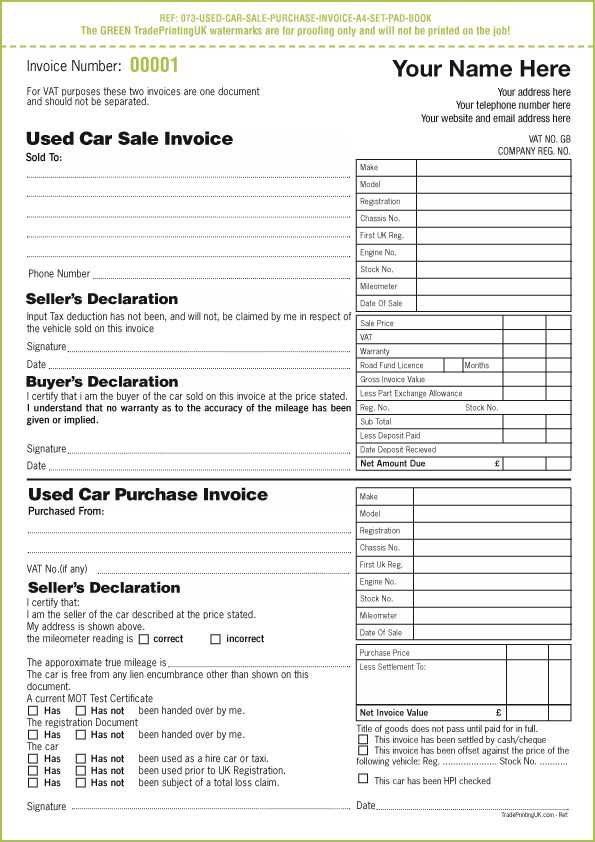
Make sure to double-check all entries before finalizing the receipt. Keep a copy for your records and provide one to the buyer. This will protect both parties in case any disputes arise in the future.
- Vehicle Receipt Template UK: A Complete Guide
Creating a vehicle receipt in the UK requires specific details to ensure the document is clear and legally sound. Follow these steps to build a reliable template:
- Header Information: At the top of the receipt, include the title “Vehicle Receipt” in a clear and bold font. Beneath it, write the date of transaction and specify the vehicle details such as make, model, year, registration number, and vehicle identification number (VIN).
- Seller and Buyer Details: Include the full names, addresses, and contact information for both the seller and the buyer. This ensures that both parties are easily identifiable.
- Transaction Amount: Clearly state the agreed price for the vehicle and mention the method of payment (cash, bank transfer, cheque, etc.).
- Odometer Reading: Always note the vehicle’s current mileage at the time of sale. This is crucial for future reference and for ensuring the vehicle’s history is accurate.
- Vehicle Condition: Include a brief description of the vehicle’s condition, highlighting any major damages or faults. This protects both the seller and buyer in case of disputes.
- Warranties and Guarantees: Clearly state whether there is any warranty or guarantee associated with the vehicle. If none, explicitly mention “sold as seen.”
- Signatures: Both the seller and the buyer must sign the receipt. This confirms that both parties agree to the terms and conditions of the sale.
- Additional Information: If applicable, include any relevant documentation such as the vehicle’s MOT certificate, service history, and proof of ownership.
By following these guidelines, you can ensure that the vehicle receipt meets all legal requirements in the UK and protects both parties involved in the transaction.
To create a legal vehicle receipt in the UK, make sure to include the following key details:
1. Include Buyer and Seller Information
Start by listing both the buyer’s and seller’s full names, addresses, and contact details. This ensures clarity on who is involved in the transaction. Include any official identification number if relevant (e.g., driver’s license or passport number).
2. Vehicle Details
Clearly state the vehicle’s make, model, registration number, VIN (Vehicle Identification Number), and mileage. This prevents disputes by making it clear which vehicle is being sold. Double-check these details for accuracy.
3. Transaction Details
Record the sale price, payment method (cash, bank transfer, etc.), and the exact date of transaction. This confirms the amount paid and when the sale occurred.
4. Signatures

Both parties should sign and date the receipt. This makes the document legally binding. Ensure that the buyer has a copy of the signed receipt for their records.
5. Warranty and “Sold as Seen”
If applicable, include a statement such as “Sold as Seen” to confirm that the buyer accepts the vehicle in its current condition. If there’s a warranty, provide details of its terms.
By following these steps, you ensure that the vehicle receipt is legally sound and provides clear evidence of the transaction.
Include these key details in your vehicle receipt to ensure clarity and legal protection:
- Date of Transaction: Always state the exact date when the sale occurred.
- Vehicle Details: Include make, model, year of manufacture, registration number, and Vehicle Identification Number (VIN).
- Buyer and Seller Information: List full names, addresses, and contact details of both parties involved.
- Purchase Price: Clearly state the agreed price, along with any applicable taxes or fees.
- Payment Method: Indicate how payment was made (cash, cheque, bank transfer, etc.).
- Odometer Reading: Document the vehicle’s mileage at the time of sale.
- Condition of Vehicle: Note the condition of the vehicle, including any known defects or damages.
- Warranty Information: Specify any warranties or guarantees, or state “sold as seen” if no warranty is offered.
- Signatures: Both the buyer and seller must sign the receipt to confirm agreement on the transaction.
A vehicle receipt serves as a legally binding document confirming the transfer of ownership from the seller to the buyer. It outlines key details about the transaction and the vehicle, acting as proof that the ownership change has taken place. Without this document, establishing ownership can become challenging if disputes arise later.
Key Elements of a Vehicle Receipt
- Seller and Buyer Information: Full names and addresses of both parties.
- Vehicle Details: Make, model, year, VIN, registration number, and mileage.
- Sale Price: The agreed amount for the vehicle, including any terms about payment methods.
- Date of Transfer: The specific date the transfer took place.
- Signatures: Both parties must sign to validate the transaction.
Why It Matters
For the buyer, the receipt provides evidence of the vehicle’s legal acquisition. For the seller, it confirms that the vehicle is no longer in their possession, which protects them from future liabilities related to the vehicle. The receipt is also used for updating records with the DVLA (Driver and Vehicle Licensing Agency), ensuring that the vehicle’s registration is correctly reflected under the new owner’s name.
Double-check the buyer’s information before finalizing the receipt. Incorrect names or addresses can lead to misunderstandings or legal complications. Always verify that the buyer’s details match the official records or identification provided.
Make sure to include the correct transaction date. Mistaking the date or failing to write it down can create confusion when tracking payments or handling returns. The date should match the actual exchange of goods or services.
Don’t forget to record the payment method. Whether it’s cash, card, or another form of payment, documenting this helps both parties stay on track in case of disputes. Leaving this blank can lead to uncertainty about how the transaction was completed.
Clearly state the amount paid, and double-check the figures. Any discrepancies, even small ones, could lead to trust issues. Always ensure that the sum matches the agreed price and the payment made.
Ensure that any applicable taxes or additional fees are explicitly mentioned. Failing to outline these can make the receipt incomplete and cause issues with financial record-keeping or tax audits.
Be specific when listing the items or services provided. Ambiguous descriptions can make it difficult to track the exact products involved in the transaction. Always include detailed descriptions and item numbers if possible.
To tailor a vehicle receipt template for private sales, begin by ensuring it clearly reflects the transaction details between the buyer and the seller. Include basic fields such as the vehicle’s make, model, year, and Vehicle Identification Number (VIN). Also, add space for the sale price and date of sale. These are key to confirming ownership transfer and proving the legitimacy of the transaction.
Adding Seller and Buyer Information

Make sure both the buyer and seller’s contact details are included. This should consist of names, addresses, and phone numbers. Adding identification numbers, such as driver’s license or passport numbers, offers additional security to the transaction, helping prevent potential disputes. It’s also a good idea to include a section where both parties can sign to confirm their agreement.
Clarifying Terms and Conditions
Modify the template to specify the condition of the vehicle, including any existing faults or repairs, as this can impact the buyer’s decision. This section ensures that both parties are clear on the vehicle’s current state. Add a disclaimer stating the vehicle is sold “as-is” to protect the seller from future claims. Providing space for additional notes, such as any warranties or special agreements, is also a good practice.
Legal Requirements for Vehicle Receipts in the UK
In the UK, vehicle receipts serve as formal records of transactions, especially when buying or selling a vehicle. These receipts must include specific details to ensure both parties are protected under the law. The key elements to include are outlined below:
Mandatory Information
A valid vehicle receipt must contain the following information:
| Detail | Description |
|---|---|
| Buyer and Seller Information | Full names and addresses of both parties involved. |
| Vehicle Details | Make, model, year of manufacture, VIN (Vehicle Identification Number), and registration number. |
| Purchase Price | The agreed price for the vehicle, including any taxes or additional charges. |
| Date of Transaction | The exact date of the sale. |
| Condition of Vehicle | A description of the vehicle’s condition at the time of the sale, including any known defects. |
| Signatures | Signatures of both the buyer and the seller to confirm the agreement. |
Consumer Protection Considerations
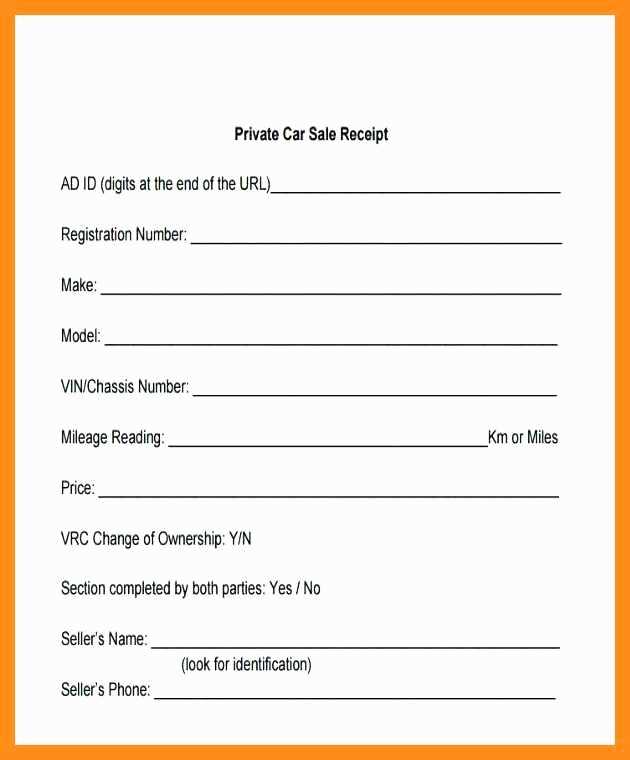
If you’re a seller, remember that the receipt should include a clear statement about the condition of the vehicle. For instance, whether the vehicle is sold “as seen” or if any warranty applies. This helps avoid disputes later on. For buyers, ensure that all information is accurate and that you receive a copy of the signed receipt for your records. A well-detailed receipt can serve as crucial evidence should any issues arise regarding the vehicle or the sale terms.
How to Create a Vehicle Receipt Template
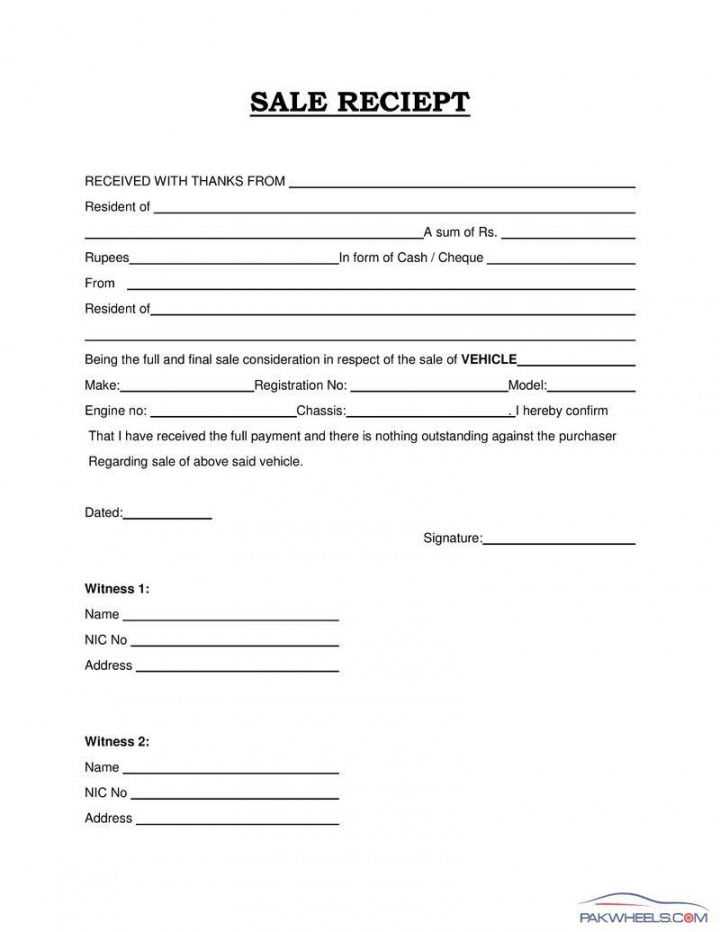
When drafting a vehicle receipt, make sure to include essential details like the buyer’s and seller’s names, vehicle make, model, and VIN number. This ensures clarity for both parties involved in the transaction.
Key Elements of a Vehicle Receipt
Start by listing the full name and address of the seller and buyer. Include the vehicle’s make, model, year, and registration number to avoid any confusion about the transaction. Specify the date of the transaction and the agreed-upon amount.
Additional Information to Include
If applicable, state the vehicle’s condition and any warranties or guarantees. You can also include a clause indicating that the vehicle is being sold as-is, which helps prevent future disputes. The receipt should be signed by both the buyer and seller to confirm the transaction.
By following these guidelines, you’ll have a clear and effective document that records the sale of the vehicle.
